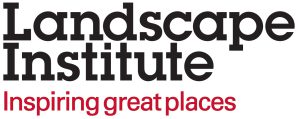Dr Jo Morrison discusses the Engagement Overlay to the RIBA Plan of Work, which was supported by the LI, and looks at the influence it has had across projects for the built and natural environment to help deliver benefits for communities and practitioners.

Author: Dr Jo Morrison, Co-Chair of the Association of Collaborative Design (ACD)
In 2024, the launch of the Engagement Overlay to the RIBA Plan of Work heralded the start of a groundbreaking shift in the built environment professions. This critical resource introduced a standardised framework for meaningful stakeholder engagement across all stages of a project; from planning and design to construction and management. The Overlay aims to enhance the quality of engagement with all stakeholders and provide a consistent baseline for place professionals.
Now, a year later, its influence is beginning to be seen across the industry, with the potential for far-reaching benefits for communities, practitioners and the sector as a whole.
“Participatory methods are essential for the quality planning, design and maintenance of everyday places, not just to foster inclusivity, access, and community agency, but to create places that are fit for purpose, tailored to the context of local environments, integrate well into the landscape and bring more people into the built environment sector.”
Carolin Göhler FLI, President, Landscape Institute
Enabling Inclusive and Sustainable Design
The Engagement Overlay goes beyond traditional approaches of informing and consulting stakeholder communities. By promoting early, effective and proportionate engagement, it aligns with the United Nations Sustainable Development Goals to deliver inclusive, resilient and sustainable outcomes. As the author Marsha Ramroop observed on LinkedIn: “This is a #crucial addition to the overlays being brought out to encourage #inclusive approaches to design and build.”
Similarly, feedback from professionals such as Laura Alvarez of Nottingham City Council and Robert Delius of Stride Treglown highlights the overlay’s practical value: “It is such an achievement, so necessary, I can’t tell you how useful this will be” and “This looks brilliant! This is a major piece of work and addresses a big gap,” respectively.
The Overlay provides built environment professionals with a mechanism to foster meaningful collaboration with communities, ensuring that projects respond directly to the needs and aspirations of the people they serve. Recently, it has been acknowledged by Wandsworth Council in their document, ‘Raising the Bar: Early Community Engagement Guidance for Applicants’, aimed at supporting applicants to engage with the community on development schemes.
Transforming Practice Through Engagement
At its core, the Engagement Overlay seeks to enhance the voices of various communities across a project’s lifecycle.
Kelly MacKinnon, Associate Professor of Architecture at Northumbria University, reflects on its academic application: “I have been delighted to see the RIBA publish the Engagement Overlay and have utilised this as a pedagogical tool within the Masters Programme, believing that architectural training should include community engagement.”
She has also referenced and utilised the Overlay in her research and architectural practice, such as Creative Central Newcastle with Newcastle City Council, Belfast Stories with Belfast City Council – leading the youth engagement aspect of the project with her PhD student Laura McClorey, and developing the public square at the Baltic Centre for Contemporary Art with Gateshead Council. These projects demonstrate how the Overlay elevates co-design as an essential professional skill.
Additionally, organisations like Barefoot Architects are responding to the framework by publishing insights on their own co-design process.
Enhancing Professional Practice
Over the past year, the Engagement Overlay has sparked dynamic discussions and inspired new initiatives. For example, at events such as the RIBA Academy CPD webinar, ‘In Conversation: Prioritising Community Through Engagement’, that attracted 460 attendees eager to deepen their understanding of ethical, community-focused practices with the ACD’s Sarah Jones-Morris, Sustrans’ Rachel Goater, and Joni Tyler of RIBA.
As well as CPD training, the Association of Collaborative Design championed the Overlay at forums, including the annual Association of Town and City Management conference, the Purple Flag International Forum, and RIBA SW Awards. We have shared it with place leaders, including Adam Dance MP for Somerset, and Liam Robinson, Leader of Liverpool City Council.
The ACD was invited to present at the esteemed Healthy City Design International Congress, where engagement’s potential for societal, economic and environmental impact took centre stage. Here, the Overlay’s significance was recognised when it received the ‘Healthy Cities Design Research Award: Highly Commended’.
Now in 2025, the ACD has launched its own CPD training, ‘An Introduction to the RIBA Plan of Work’ which provides place professionals with the opportunity to gain a deep dive into the framework. The one hour session explores what it is, why it is important and how to apply it practically to projects.
“This brings hope to the future of public engagement” Feedback to the ACD CPD training
Challenges and Opportunities
Implementing the Engagement Overlay comes with challenges. Effective engagement demands vision, resources, commitment and a willingness to adapt. Yet, the rewards are clear: stronger community relationships, designs that genuinely reflect public needs which lead to healthier places, and a more inclusive and long-term approach to the built and natural environment.
Looking Ahead
Clearly, the Engagement Overlay has already started to make its mark and its influence continues to grow.
As we move forward, ongoing collaboration and knowledge-sharing—through initiatives like the ACD Conversation Labs and other key events—will help to ensure that the Overlay’s principles become deeply rooted in practice.
Through projects like Creative Central Newcastle and Belfast Stories, as well as widespread professional and academic adoption, the Engagement Overlay can shape a new era for engagement. As practitioners, educators and policymakers embrace this framework, the future of the built and natural environment promises to be one where engagement is not an afterthought but a cornerstone of meaningful, community-focused design.
In 2025, make it your mission to adopt the Engagement Overlay to the RIBA Plan of Work.
The Association of Collaborative Design’s Sarah Jones-Morris (lead author) and Dr Jo Morrsion co-authored the Engagement Overlay to the RIBA Plan of Work with Rachel Goater and Paul Ruffles of Sustrans, in partnership with RIBA.



